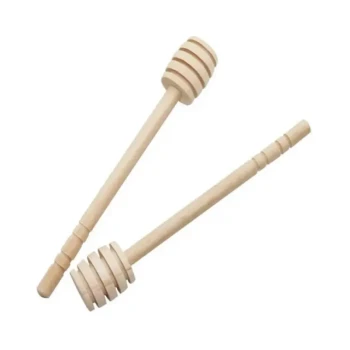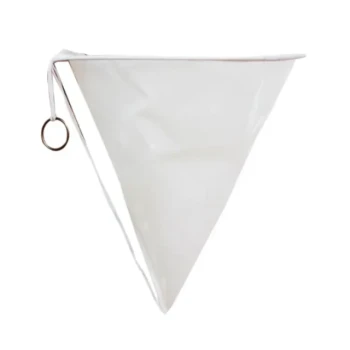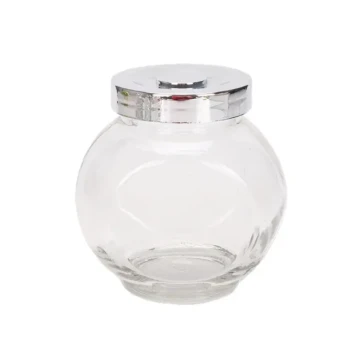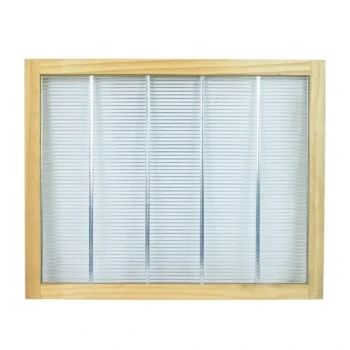The ideal moisture content for honey is a precise window, not a single number. For optimal quality and indefinite shelf life, you should aim for a moisture level between 16% and 18%. Honey with a moisture content at or below 17% is considered the safest, as it creates an environment where fermentation cannot occur.
The moisture level in honey is the single most important factor determining its stability. Keeping it below 18% prevents the naturally present yeasts from activating, effectively starving them of the water needed to multiply and spoil the honey.
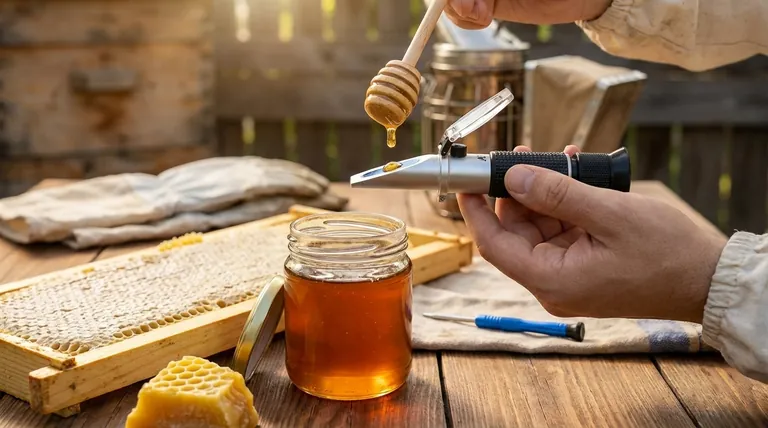
Why Moisture Content Governs Honey Quality
Honey's legendary shelf life is not automatic; it is a direct result of its low water content and high sugar concentration. Understanding this relationship is crucial for any producer.
The Science of Fermentation
All raw honey contains wild yeasts. These microorganisms remain dormant and harmless as long as the honey's water content is sufficiently low. The high concentration of sugar creates intense osmotic pressure, which pulls water out of any yeast cells, dehydrating and neutralizing them.
When the moisture content rises, this osmotic pressure weakens. The yeast cells can retain enough water to become active, consume the honey's sugars, and begin the process of fermentation, producing alcohol and carbon dioxide.
The Impact on Stability and Shelf Life
A low moisture level is your guarantee of a stable product. Once properly sealed, honey with less than 18% water can last for decades or even centuries without spoiling.
As the moisture content increases, the shelf life dramatically decreases. Honey with over 20% moisture is no longer a preserved food; it's a product on a timeline to inevitable spoilage.
The Fermentation Risk Thresholds
The risk of fermentation isn't a simple on/off switch. It increases dramatically as the moisture content rises. Knowing these thresholds allows you to assess your own honey accurately.
The Safe Zone: Below 17%
This is the gold standard for preservation. At this level, the sugar concentration is so high that fermentation is virtually impossible, regardless of the honey's natural yeast count.
The Target Zone: 17% to 18.5%
This range is the accepted industry standard and the target for most beekeepers. Fermentation is highly unlikely. It would only occur under rare circumstances, such as if the honey had an unusually high concentration of yeast to begin with.
The Danger Zone: 18.6% to 20%
In this range, you have a serious problem. The risk of fermentation is no longer theoretical; it is significant and probable. The honey may seem fine initially, but spoilage is likely to occur over time.
The Spoilage Zone: Above 20%
Honey with moisture content above 20% is guaranteed to ferment. Spoilage is rapid and inevitable. This honey is considered low-quality and is not stable for storage or sale as a premium product.
Common Pitfalls to Avoid
Achieving the right moisture level requires avoiding two common mistakes that can compromise an otherwise perfect batch of honey.
Harvesting Uncapped Honey
Bees cap the honeycomb cells with wax only when they have dehydrated the nectar to the correct moisture content (typically below 18%). Harvesting frames with a large amount of uncapped or partially capped cells introduces this "wet" nectar into your final product, raising the overall moisture level significantly.
Improper Storage
Honey is hygroscopic, which means it will actively absorb moisture from the surrounding air. Storing honey in a humid environment, especially in containers that are not airtight, can cause its moisture content to rise over time, turning a perfectly stable product into a high-risk one.
Making the Right Choice for Your Goal
Your target moisture level should be guided by your specific goal for the honey. Use a honey refractometer to get an accurate reading and guide your actions.
- If your primary focus is maximum shelf stability and premium quality: Aim for a moisture content below 17.5% to eliminate any practical risk of fermentation.
- If you are producing for immediate sale or consumption: A range of 17.5% to 18.5% is an acceptable industry standard, provided the honey is stored in airtight containers.
- If your reading is above 18.5%: You must take corrective action. This honey is not stable and requires blending with drier honey or processing in a dehydrator to prevent spoilage.
Ultimately, meticulously controlling honey's moisture content is the key to preserving the work of your bees and delivering a stable, high-quality product.
Summary Table:
| Moisture Level | Risk of Fermentation | Action Required |
|---|---|---|
| Below 17% (Safe Zone) | Virtually Impossible | Ideal for long-term storage and premium quality. |
| 17% - 18.5% (Target Zone) | Highly Unlikely | Acceptable industry standard for sale. |
| 18.6% - 20% (Danger Zone) | Significant & Probable | Requires immediate corrective action (blending/dehydrating). |
| Above 20% (Spoilage Zone) | Rapid & Inevitable | Not stable; spoilage is guaranteed. |
Ensure Your Honey's Quality with the Right Equipment
Precise moisture control is non-negotiable for producing stable, high-quality honey. HONESTBEE supplies commercial apiaries and beekeeping equipment distributors with the professional-grade tools needed for success.
We provide the durable, accurate equipment—like honey refractometers and storage solutions—that helps you consistently hit the ideal 16%-18% moisture target, protect your harvest from fermentation, and maximize your product's shelf life and value.
Ready to upgrade your operation with wholesale-focused reliability? Contact HONESTBEE today to discuss your equipment needs and ensure every batch meets the highest standard.
Visual Guide
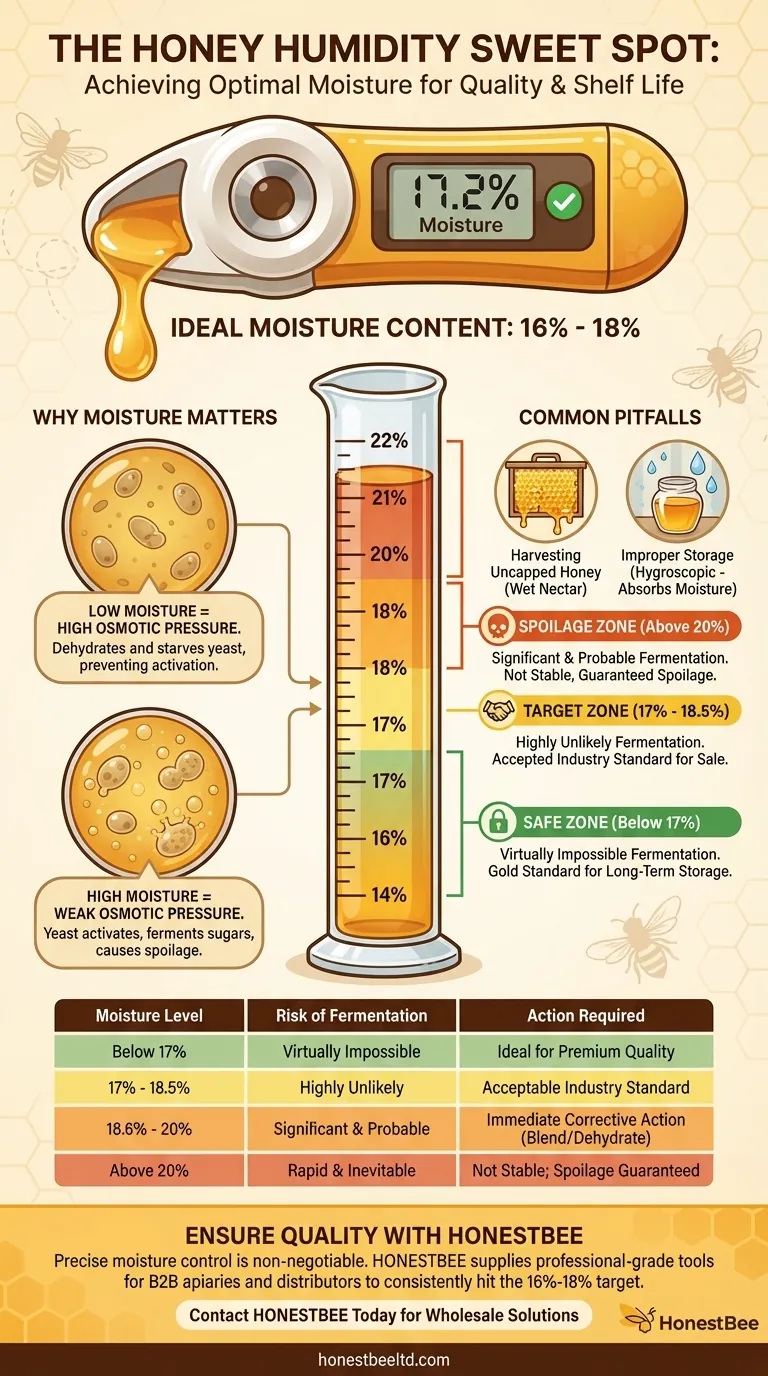
Related Products
- Precision Honey Refractometer Instrument for Quality Assessment
- 10L Stainless Steel Electric Honey Press Machine
- 6 Frame Manual Stainless Steel Honey Extractor Beekeeping Equipment
- HONESTBEE 72 Frame Industrial Electric Honey Extractor for Beekeeping
- Easy Use Manual Stainless Steel Honey Press for Honey Comb
People Also Ask
- Why is a honey refractometer important for beekeepers? Ensure Quality and Prevent Fermentation
- What is a honey refractometer? The Essential Tool for Perfect Honey Quality
- Why is a honey refractometer essential for honey harvesting? Protect Your Harvest from Spoilage
- What are the key steps to using a honey refractometer? Ensure Honey Quality & Prevent Fermentation
- What are the key points for proper usage of a honey refractometer? Ensure Accurate Moisture Readings Every Time






